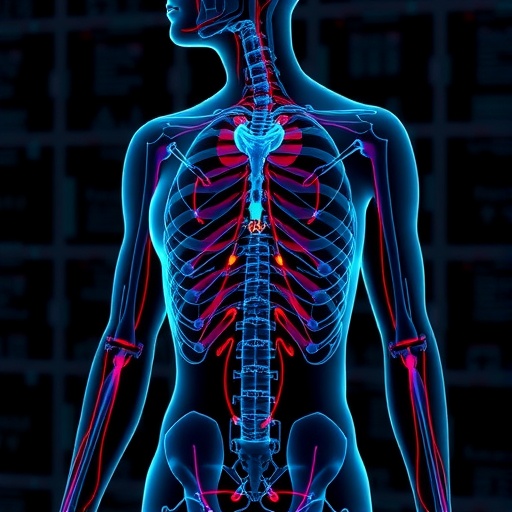In an era marked by technological advancement, the concept of the Internet of Bodies (IoB) is gradually reshaping our understanding of health and medicine. This emergent network intricately connects human bodies with a myriad of Internet of Things (IoT) devices, aiming to enhance and personalize healthcare experiences. However, current IoB systems encounter significant limitations due to the physical disconnection between sensing mechanisms and memory-computing functionalities. This separation leads to increased latency and energy consumption, undermining the effectiveness and efficiency of healthcare applications. A transformative solution is on the horizon that rests on the innovative potential of organic electrochemical transistors (OECTs).
OECTs stand at the intersection of biology and technology, offering a remarkable dual functionality. They serve as both volatile sensors and non-volatile in-memory computing devices, creating a unique synergy that can revolutionize the way we approach the IoB. What distinguishes OECTs is not merely their technical prowess but also their biocompatibility, which allows for seamless integration with biological systems. The potential of these transistors is particularly promising for health monitoring applications that require a delicate balance of performance and safe interaction within the human body.
The intelligence of the IoB hinges on the integration of three core functions: sensing, memory, and computing. OECTs can facilitate these functions collectively, thus paving the way for a sophisticated network of smart health devices that operate with heightened precision. The ability to reduce the physical gaps between these separate functionalities will drastically enhance the speed and efficiency with which data is transmitted and processed. As a result, healthcare providers may offer real-time monitoring, immediate decision-making support, and personalized medical solutions like never before.
To fully harness the potential of OECTs within the IoB, researchers have identified three key integration approaches: heterogeneous, homogeneous, and merged integration. Each method provides distinct advantages depending on the specific application scenario. Heterogeneous integration emphasizes the combination of dissimilar materials to achieve optimal performance; homogeneous integration focuses on compatibility and uniformity in material properties, potentially leading to streamlined manufacturing processes; while merged integration offers a holistic approach, thereby maximizing integration efficiency by simultaneously addressing computer, memory, and sensing needs.
Yet, despite the exciting possibilities, several key challenges remain on the road to realization. Device stability is a primary concern, as the interactions between organic materials and biological systems can lead to performance degradation over time. Ensuring biosafety is also paramount, given that these devices will operate within human bodies and must demonstrate biocompatibility without adverse effects. Auxiliary circuits are another crucial consideration, as they play a significant role in data processing and responsiveness. Addressing these issues is essential for building a robust infrastructure that supports the evolving needs of the IoB.
In exploring the future landscape of personalized healthcare, it becomes evident that OECTs could unlock new dimensions in brain-computer interface technologies. By providing seamless communication pathways between the brain and digital devices, OECTs represent a frontier of research that could lead to groundbreaking advancements. Such integrations hold the promise of translating neurological signals into actionable data, fostering new interactions between humans and machines that extend beyond conventional capabilities.
Additionally, the implications of an intelligent IoB extend beyond individual health monitoring and brain interface systems. The incorporation of swarm intelligence in healthcare scenarios could lead to revolutionary advancements in areas ranging from epidemic tracking to personalized medication regimens. By enabling real-time data aggregation from numerous biosensors, a collective intelligence could emerge, capable of making informed decisions en masse. This idea posits a future where health systems can react proactively to patient needs and public health concerns, thus enhancing the overall responsiveness and adaptability of medical infrastructures.
Moreover, the potential of OECTs in the realm of rehabilitation is an area of burgeoning interest. These devices could be employed to create intelligent prosthetics or enhance rehabilitation strategies for various ailments, providing critical feedback on both patient performance and device functionality. The integration of OECTs may allow for adaptive learning systems that can evolve according to patients’ progress, thereby tailoring recovery paths and improving outcomes.
As research into OECTs progresses, the collaboration between disciplines – spanning biology, materials science, and engineering – will be critical. To actualize the full potential of intelligent IoB systems, interdisciplinary teams will need to share expertise and innovate beyond traditional boundaries. This collaborative spirit shall foster breakthroughs that can drive the adoption of advanced technologies in healthcare systems, ultimately leading to improved patient life quality.
In conclusion, the convergence of organic electrochemical transistors and the principles of the Internet of Bodies offers a promising avenue forward for personalized healthcare. By addressing the limitations of current systems and exploring integrated approaches, the future landscape of healthcare could be transformed. OECTs are not just another technological advancement; they represent a paradigm shift in how we think about interaction, connection, and care. Only time will reveal the full scope of their capabilities, but the signs point towards a future rich with possibilities.
In summary, the intelligent Internet of Bodies, supported by OECT technology, holds the keys to a new era in health care. As researchers continue to push the envelope of what is possible, they will be poised to redefine the future of medicine and individual health management pursuits in ways we have only begun to imagine.
Subject of Research: Internet of Bodies and Organic Electrochemical Transistors
Article Title: Organic electrochemical transistors for integrated sensing–memory–computing hardware towards intelligent Internet of Bodies
Article References:
Wang, B., Wang, S., Zhao, C. et al. Organic electrochemical transistors for integrated sensing–memory–computing hardware towards intelligent Internet of Bodies.
Nat Rev Electr Eng (2025). https://doi.org/10.1038/s44287-025-00234-x
Image Credits: AI Generated
DOI: 10.1038/s44287-025-00234-x
Keywords: Internet of Bodies, Organic Electrochemical Transistors, Personalized Healthcare, Integrated Sensing-Memory-Computing, Brain-Computer Interface, Swarm Intelligence.




